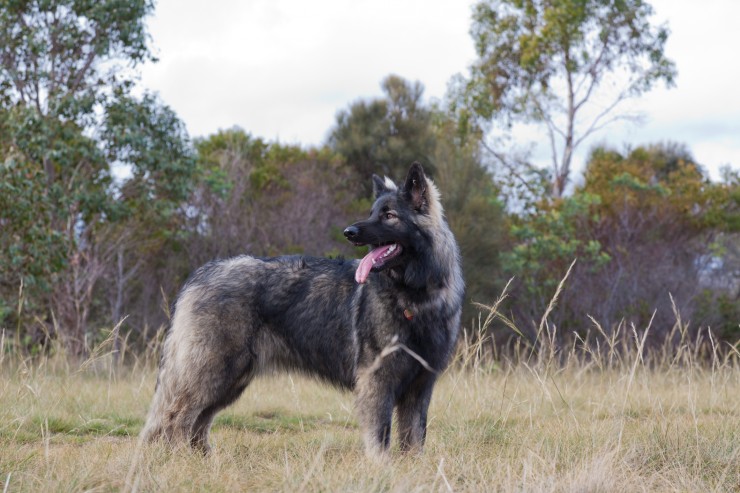

The term petechiae refers to very small red or purple spots (around the size of the head of a pin) that can appear on either the skin or the mucous membranes (such as inside of the eyelids). These spots usually appear in small groups, and often look rather like a rash. The word petechiae comes from the Italian word petecchia, which translates as “miniature bruise.” The small spots that make up a pattern of petechiae indicate that tiny blood vessels under the skin are leaking, causing the pattern of petechiae to appear.
While bruising of the skin is usually uniform and comprised of a patch of bruised colour, petechiae is rather different, in that the tiny blood vessels create the miniature spots rather than a patch of colour. Petechiae spots are each smaller than 3mm in size, and if you apply pressure onto the area in question, they do not whiten and lose their redness, while a true rash usually will.
While dog owners are generally aware of most of the indicators of serious ill health in their dogs, the fact that petechiae spots are so small and often inconspicuous often leads dog owners to believe that they are not indicative of anything major, and often, that they are not worthy of much attention.
However, petechiae means that blood vessels or capillaries under the skin are damaged and leaking, and this may in its turn have a potentially serious reason behind it, and petechiae should never be ignored or written off as minor without being checked out by the vet.
In this article, we will look at some of the common causes of petechiae in dogs, and what they mean. Read on to learn more.
An impact or injury to the body can cause petechiae to develop, and if you know that your dog took a fall, ran into something or otherwise may have been physically injured, you will have a head start in working out what has happened! Petechiae may not appear immediately at the site of the impact; it can take several hours or even overnight before the spots that indicate leaking blood vessels become obviously visible on the surface of the skin.
When your dog gets injured or otherwise bleeds for any reason, platelets within the blood coagulate in the area of the cut to seal over the injury while the underlying tissue has a chance to heal. If your dog’s blood does not clot properly or their platelet levels are low, this will not happen properly, meaning that haemorrhaging under the skin will allow blood to leak out of the capillaries, leading to the typical red spot pattern of petechiae.
This can happen due to conditions such as haemophilia, Von Willebrand’s syndrome, or thrombocytopenia.
Certain poisons work due to the presence of anticoagulant agents within their formulation, which prevent the blood from clotting normally and reduce the body’s ability to metabolise vitamin K, an essential agent in clotting. This is how common rodenticides work, such as rat or mouse poisons.
If your dog has consumed a poison, or eaten a rat or mouse that has consumed such a poison, this can lead to petechiae among other symptoms, including pale gums, listlessness, or bleeding from orifices such as the nose, mouth and eyes, and blood in the stools or urine. Petechiae is often the first symptom that will be evident in poisoning cases, and should be viewed as an emergency.
If your dog has a supressed or hostile immune system, this can lead to the immune system of your dog actively working against them to attack the body’s own systems, and in some cases, this manifests as destruction of the platelets used in clotting. Petechial bleeding can be one of the first indicators of this, and is often used as part of a differential diagnosis of an issue with the immune system of the dog.
Heat stroke is unfortunately very easy for dogs to develop when the weather is warm, and being unable to cool down effectively, or too much vigorous exercise when it is hot outside can all escalate quickly and potentially pose life threatening.
One of the main symptoms of heatstroke in the dog is very dark red gums, often accompanied by petechial haemorrhaging in the gums, eyelids or skin. By the time you spot the signs of petechiae, you will probably already be aware that something is wrong with your dog, and if you suspect heatstroke, you should work quickly to cool your dog down, and contact your vet as an emergency situation.
Petechiae in dogs may simply come about as the result of a bump, knock or injury that you are not aware of, but given that it can also be indicative of a range of potentially serious conditions, it is always wise to contact your vet immediately for advice on how to proceed.
 What Is Bowen Therapy For Dogs?
What Is Bowen The
What Is Bowen Therapy For Dogs?
What Is Bowen The
 Health Issues Seen In The Biewer Terrier
Health Issues See
Health Issues Seen In The Biewer Terrier
Health Issues See
 Doggy Day Care - Options For Your Dog If You Work All Day
Doggy Day Care -
Doggy Day Care - Options For Your Dog If You Work All Day
Doggy Day Care -
 Sugar Gliders - What Are They And Do I Want One As A Pet?
Sugar Gliders - W
Sugar Gliders - What Are They And Do I Want One As A Pet?
Sugar Gliders - W
 Learning About The Shiloh Shepherd Dog
Learning About Th
Learning About The Shiloh Shepherd Dog
Learning About Th
Copyright © 2005-2016 Pet Information All Rights Reserved
Contact us: www162date@outlook.com